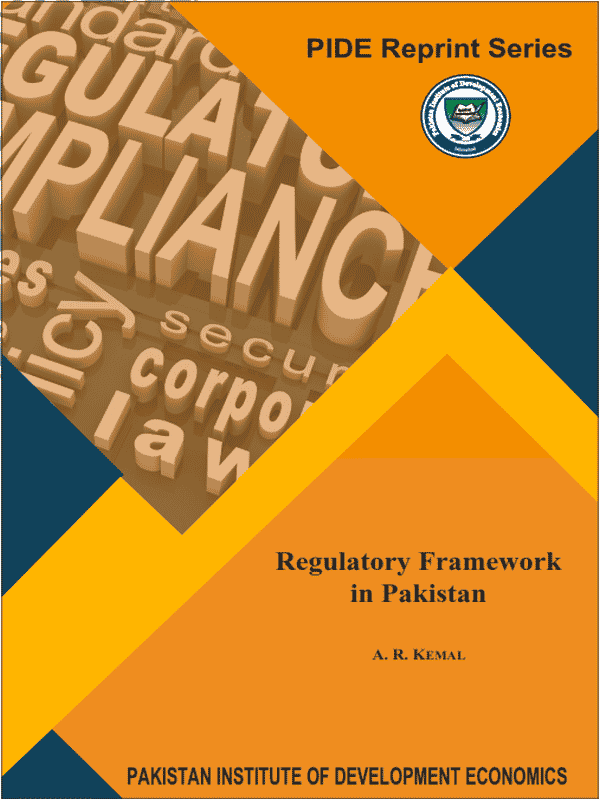
Pakistan Institute of Development Economics
- Home
Our Portals
MenuMenuMenuMenuMenuMenuMenu - ResearchMenuMenuMenuMenuMenuMenuMenu
- Discourse
- The PDR
- Our Researchers
- Academics
- Degree Verification
- Thesis Portal
- Our Portals
Regulatory Framework in Pakistan
Until the mid-1970s, governments all over the world (especially in the developing economies), intervened in markets on the pretext of market failure arising from externalities, decreasing cost industries, and equity considerations for maximising social welfare. In Pakistan, where the private sector has played a dominant role, except probably for the 1970s, 1 private sector activities have all along been regulated through various types of controls and regulations on entry and exit, prices, credit, foreign exchange, imports, investments, etc. These regulations were imposed with a view to ensuring that private sector allocations were in accordance with the national priorities (see Pakistan, 1983-84). However, the objectives were rarely realised and, in fact, these regulations have been responsible for red-tapism and corruption. On the grounds of government failure, privatisation and deregulation policies are being practised almost everywhere in the hope that they would help in efficient allocation of resources and higher levels of productivity. Considerable regulatory reforms have also been effected in Pakistan over the last two decades. Investment and import licensing have been withdrawn, most of the foreign exchange restrictions have been removed, capital market regulations have been simplified, price controls have been lifted, and interest rates have been deregulated. However, there is considerable room for further regulatory reforms. Similarly, various public enterprises in the manufacturing and financial sectors have been privatised, telecommunication, airlines, and energy firms have been partially divested, and the government has an ambitious privatisation programme of divestiture in various other fields. The main force behind the process of privatisation is the need to address the problems of mismanagement of resources, overstaffing, inappropriate and costly investments, poor quality of services, and heavy losses of various public enterprises.



